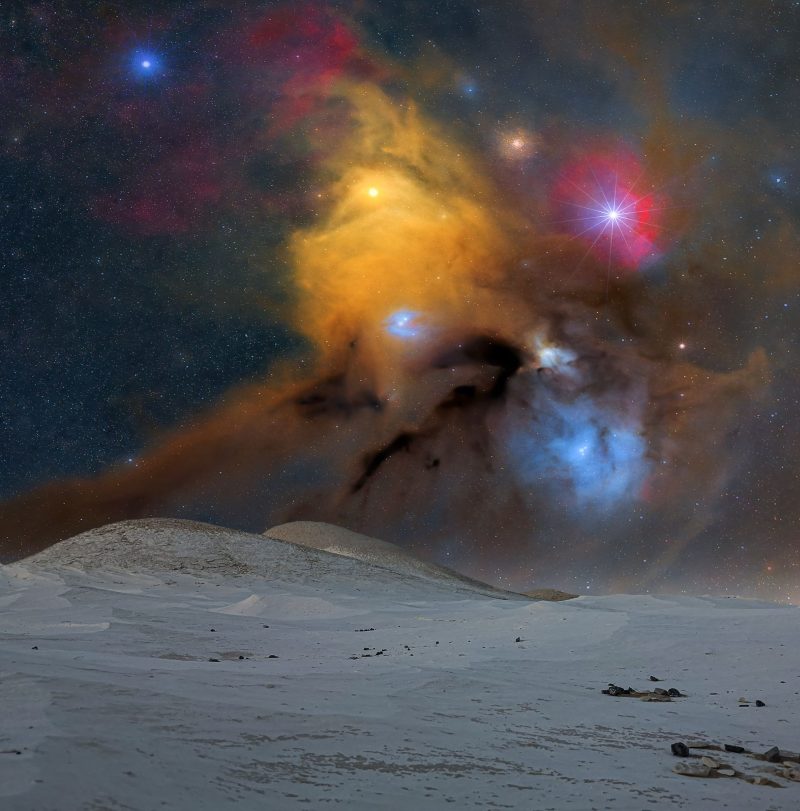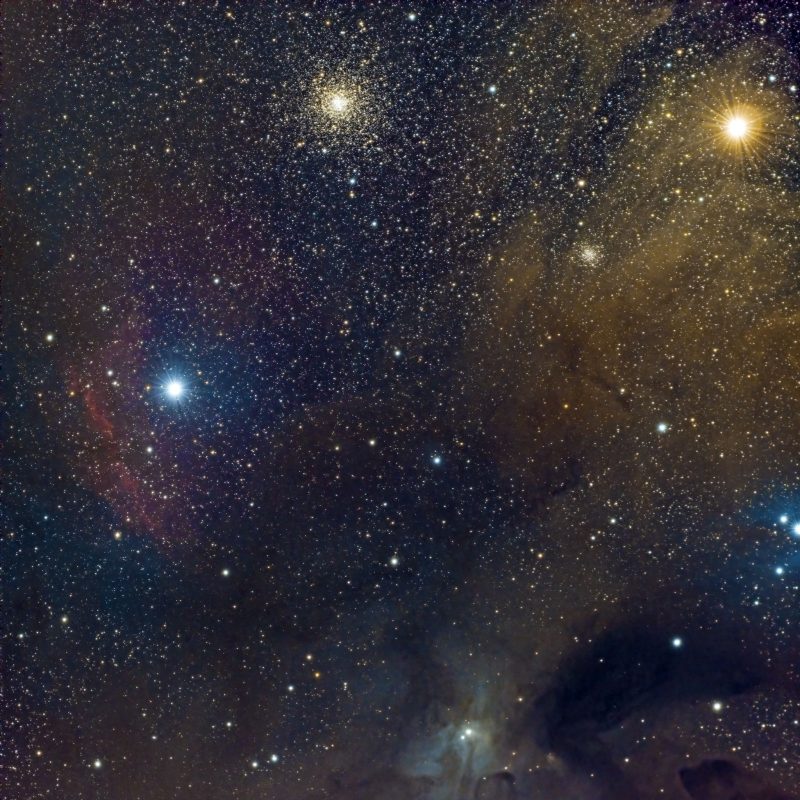
The colorful world of Rho Ophiuchi
The Rho Ophiuchi cloud complex is one of the most colorful areas of the night sky and a favorite target for astrophotographers. The photo above shows a portion of the Rho Ophiuchi region, which, in its entirety, stretches 4.5 degrees by 6.5 degrees across the dome of the sky. For reference, the width of the full moon is 0.5 degree. By the way, the star Rho Ophiuchi is just out of frame in this image.
Then across the border from Ophiuchus in the constellation Scorpius, the star Antares shines brightly from 550 light-years away. The magnificent globular cluster at the top is M4, which is one of the nearest globular clusters to Earth at 7,000 light-years away. Also, NGC 6144 is the smaller globular cluster between Antares and M4 and is a whopping 33,000 light-years away.

Last chance to get a moon phase calendar! Only a few left. On sale now.
Antares and the surrounding region
In fact, Antares, the brightest star in Scorpius, is nearing the end of its life cycle. That is to say, the star is beginning to puff off layers of gas, creating its own funeral shroud. By the way, to the unaided eye, Antares looks more red than yellow, which is how it earned its name. So in these long-exposure images, the yellow reflection nebula around Antares makes it look yellowish. Ancient cultures considered Antares a rival of reddish Mars, known as Ares in Greek, making Antares the “Anti-Ares” star.
Al Niyat, or Sigma Scorpii, is the bright bluish star to the left in the above image, with red gas arcing around it. Furthermore, there are two stars named Al Niyat, one on each side of Antares. The other Al Niyat is Tau Scorpii and is to the right of Antares and M4 in the following image.

Locating the colorful Rho Ophiuchi cloud complex
The Rho Ophiuchi region lies along the edge of the Milky Way galaxy as seen from Earth. The Northern Hemisphere gets its best view of Ophiuchus, Scorpius and this general region of the Milky Way during the summer. So the farther north you are, the lower the constellation is on your horizon. Thus, in places such as Seattle or Stockholm, the entire constellation of Scorpius never clears the horizon.

Enough gas and dust for 3,000 suns
Overall, this region of sky is notable for its thick concentrations of gas and dust. Plus, the black clouds that obscure the background stars are known as dark nebulae. The gas and dust in the Rho Ophiuchi cloud complex supports a star-forming region a mere 460 light-years away, making it one of the closest known star-forming regions to Earth. In fact, enough material lies in this star-forming region to create the equivalent of 3,000 suns.
Also, the actual star Rho Ophiuchi, which gives its name to this region, is visible in the image above. It’s the star enveloped in a large blue cloud just right of the center. This is the double star Rho Ophiuchi, a not-particularly bright pair that shines at magnitude 4.6. The star would be two magnitudes brighter if not for the dusty clouds that obscure it. Reflection nebula is the name for the kind of bright bluish halo extending around Rho Ophiuchi. The dark nebulae that streak out around Rho Ophiuchi extend for 100 light-years into Sagittarius to the east. One day these dusty clouds of gas will disappear as bright new stars radiate from this region of space.
Bottom line: The Rho Ophiuchi region of the sky contains an abundance of beautiful starry gems.











